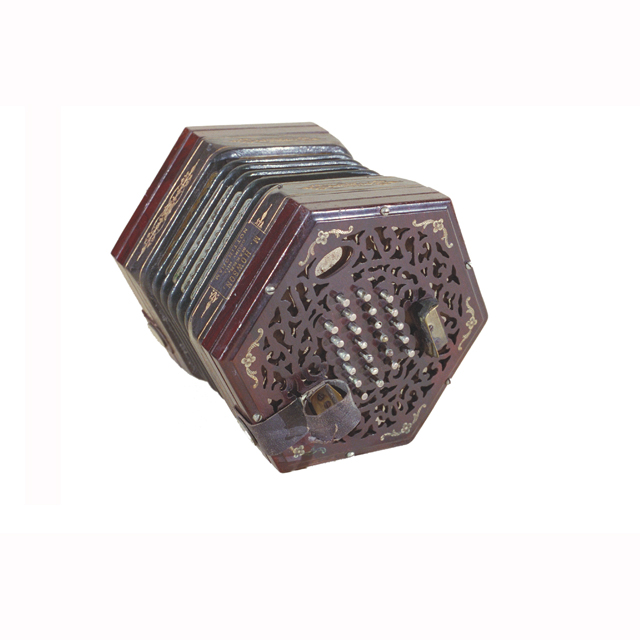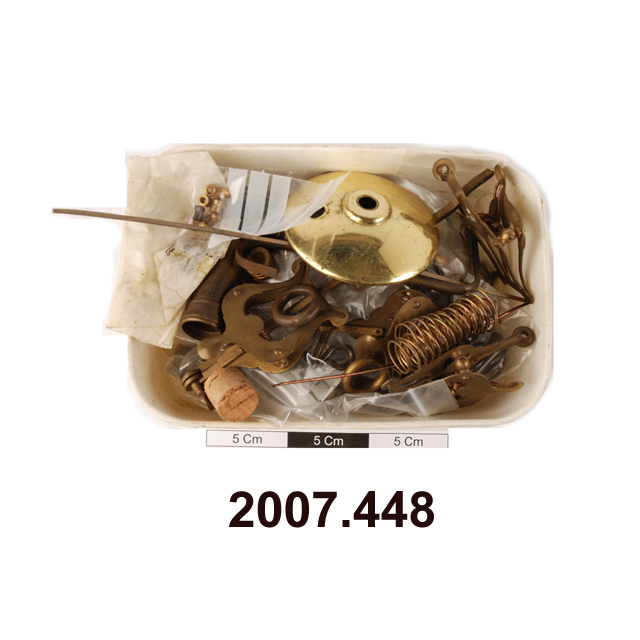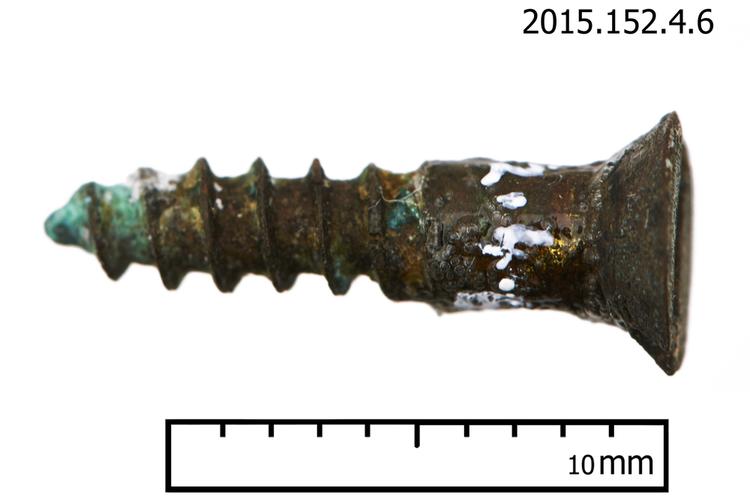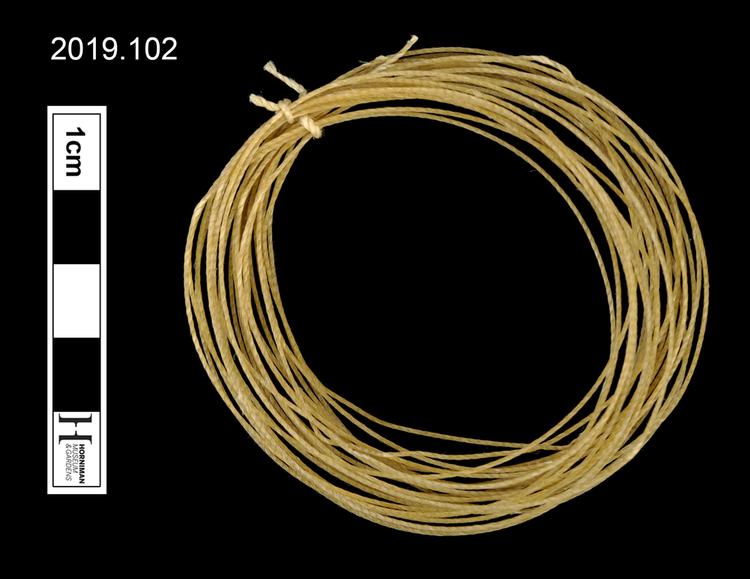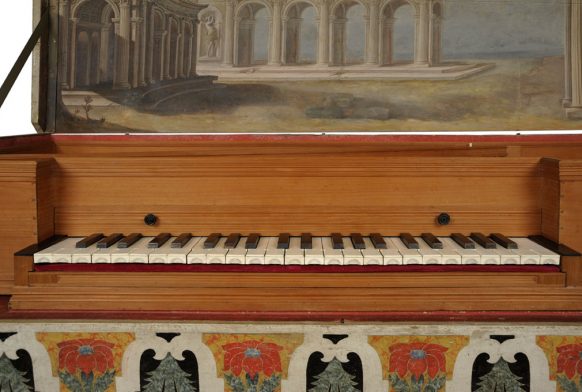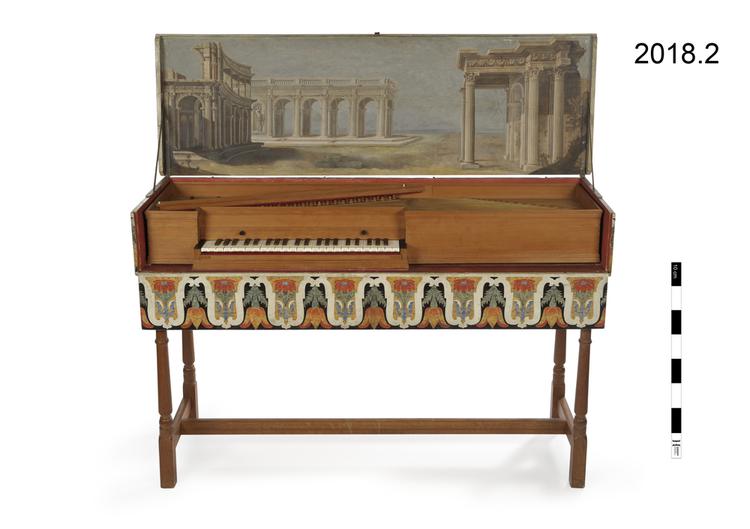
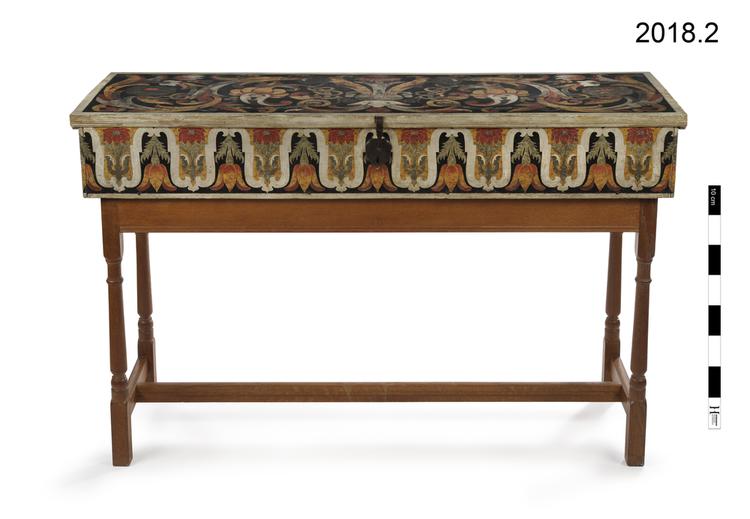
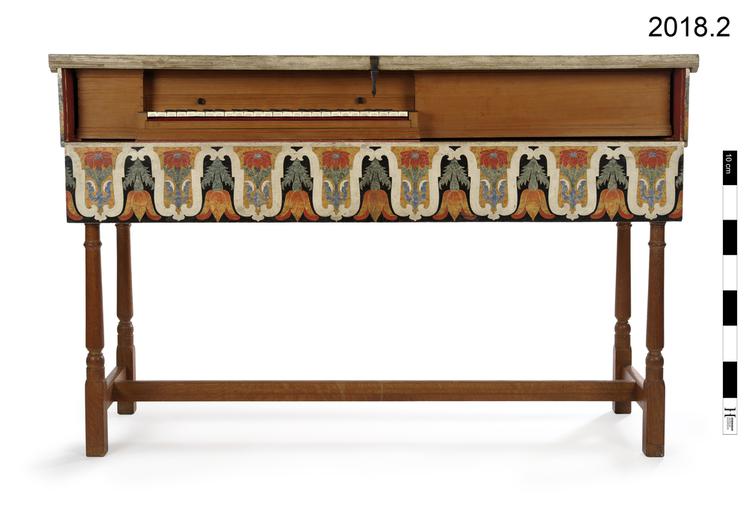
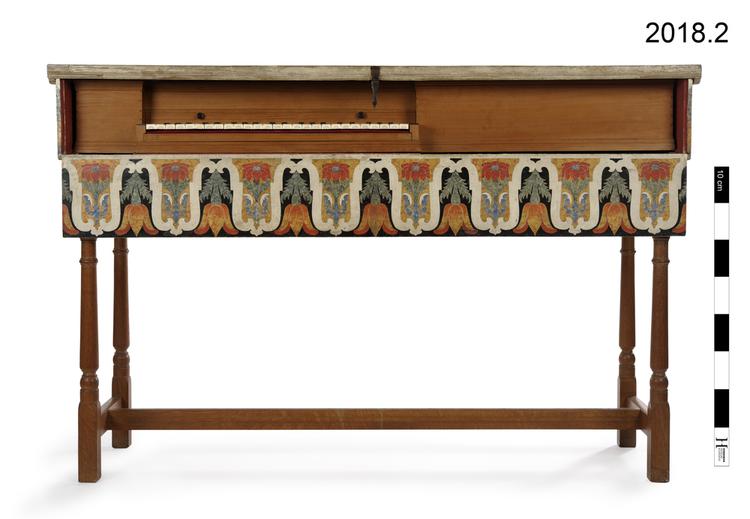
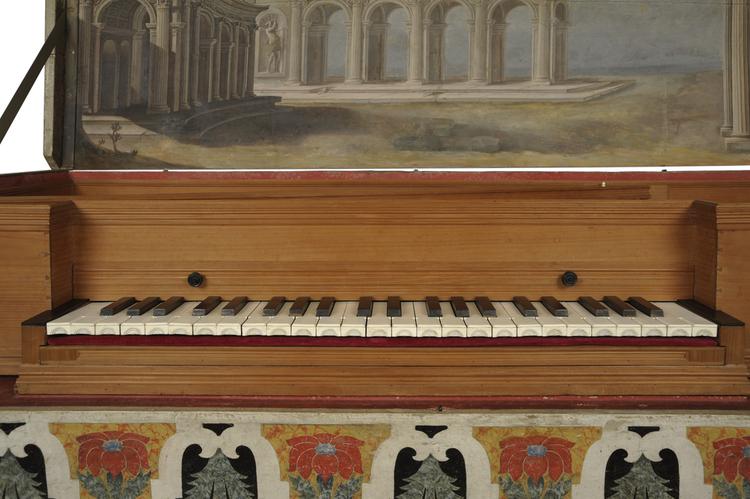
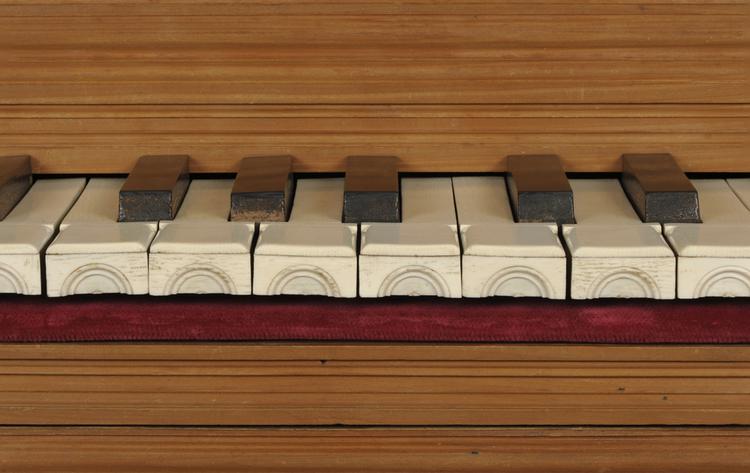
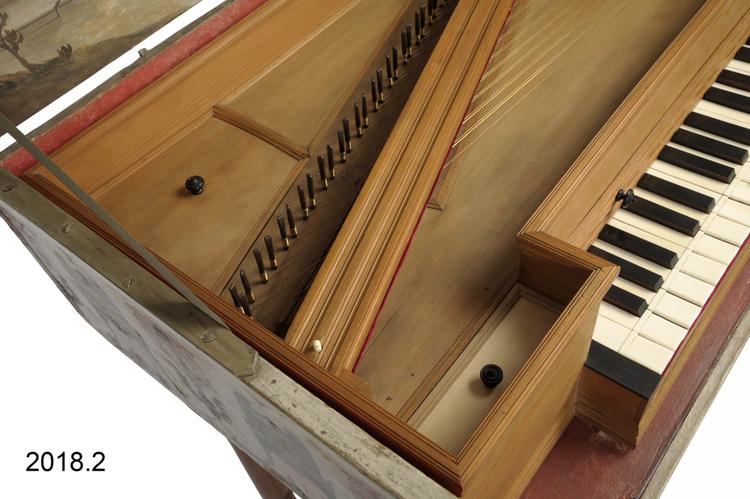
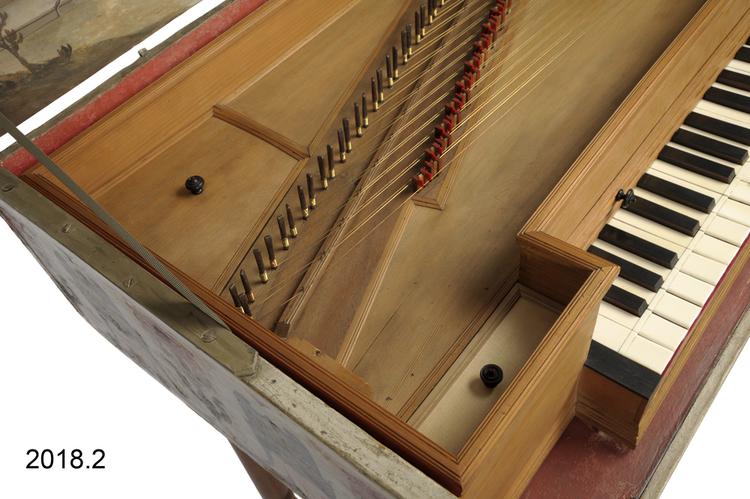
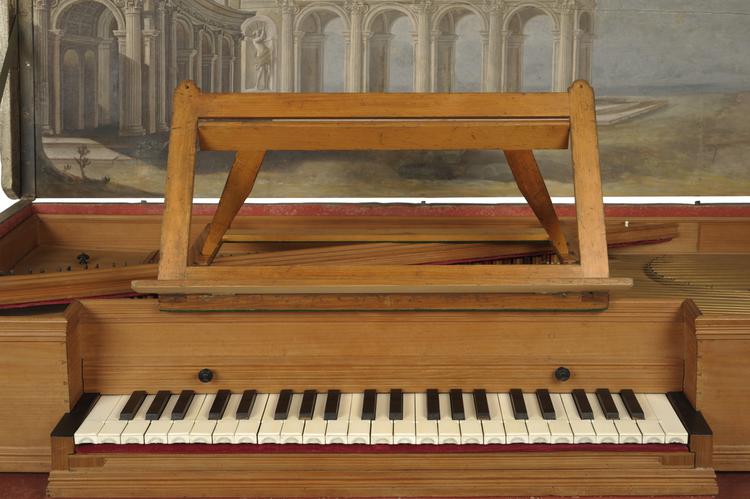
A virginal by Onofrio Guarracino, Naples, 1668.
The virginals is signed and dated by the maker, on the underside of the top key (c3). The signature of the 20th-century restorer, Alec Hodsdon together with the date Feb[ruary] 1935, can also be found inside. Like most Italian virginals of the period, it has a single set of strings and a keyboard range of four octaves with a ‘short octave’. This tuning of the low bass notes makes available to the player the more commonly used diatonic notes (white keys) in place of the rarely needed accidentals (black keys).
Acquired at auction from Finchcocks.
In the Baroque period, the terms ‘spinet’ and ‘virginals’, although used inconsistently across Europe, usually signified smaller plucked keyboard instruments. In 17th-century England, the term 'virginals' was frequently applied to any instrument possessing the harpsichord's plucked action. The modern definitions of these terms are based on technical differences including the placement of the tuning pins, the bridges and the lowest string; but this instrument, together with many others from the historical period, conforms precisely to neither definition. By Onofrio Guarracino, one of the most celebrated Neapolitan makers of his time, it possesses many features associated with that region and Italian keyboards in general. Very lightly built, they were generally kept in robust and often lavishly decorated, wooden outer cases. The painting of this case in imitation pietra dura, a technique of inlaying highly polished precious and semi-precious stones into marble, suggested prestige and opulence. The interior lid painting is by an unknown artist and probably of later date. The delicate soundboard rose, made of wood and parchment is the decorative focal point for the instrument independent of its outer case. These primarily domestic instruments were often played by women. They had a significant body of solo repertoire but could also be used to accompany singers or ensembles of quieter instruments like recorders. One of the previous owners, Ellen Willmott, was a prominent horticulturist and influential member of the Royal Horticultural Society. In 1897, she became the recipient of the first Victoria Medal of Honour. This instrument, was owned by the Finchcocks Museum of Keyboard Instruments and was acquired through funding provided by the National Lottery Heritage Fund.



